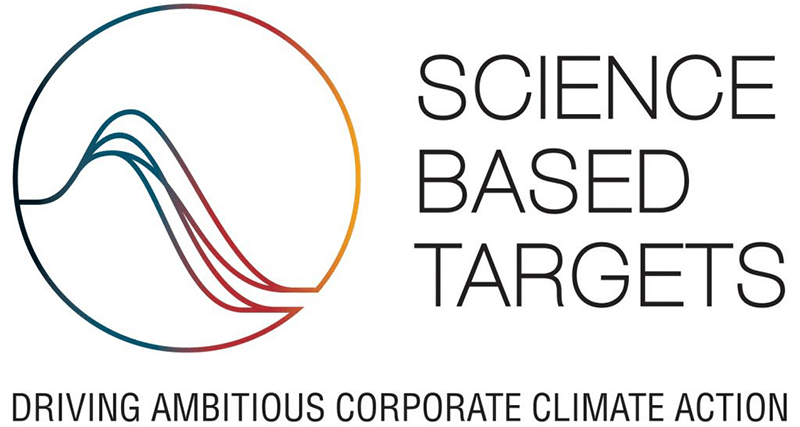Environmental Targets and Plans
Our stance toward environmental initiatives
The AMADA Group’s environmental initiatives focus on its aim to become an enterprise that uses ecological manufacturing to connect with its customers, society, and the world. Following the Environmental Declaration, set in fiscal 2010 and stating our medium-term targets for fiscal 2025, we have now established the AMADA Group 2030 Medium-term Environmental Plan (AMADA GREEN ACTION PLAN 2030), stating our medium-term targets through fiscal 2030. Here, we have made a commitment to action on three important issues: the realization of a decarbonized society, the realization of a recycling-oriented society, and the conservation and regeneration of biodiversity.
Given the above, the AMADA Group has formulated its Medium-term Environmental Plan regarding the following four items.
- Realizing a Decarbonized Society (reducing CO₂ emissions in the product lifecycle and business processes)
- Realizing a Recycling-Oriented Society
- Management of Chemical Substances
- Implementing a Range of Actions to Conserve Biodiversity

Medium-term Environmental Plan
| Fiscal 2024 Targets | Fiscal 2024 Results | Fiscal 2025 targets (interim targets) | Fiscal 2030 Targets | |
|---|---|---|---|---|
| (1) Realizing a decarbonized society | ・CO₂ emissions for all products: -45.8% (vs. fiscal 2013) |
・CO₂ emissions for all products: -69.1% (250,449 t-CO₂) [Achieved] [Domestic] -65.3% (116,664 t-CO₂) [Overseas] -71.9% (133,785 t-CO₂) |
・CO₂ emissions for all products: –50.0% (vs. fiscal 2013) Scope 1 and 2 |
・CO₂ emissions for all products: –50.0% (vs. fiscal 2013) Scope 3 Category 11 *Base value (fiscal 2013): 811,635 t-CO₂ (Domestic: 336,011 t-CO₂, overseas: 475,624 t-CO₂) Scope1+2 (Intensity) 29.6 t-CO₂/Revenue billion yen |
| ・CO₂ emissions at all business sites and plants: -64.2% (vs. fiscal 2013) Scope 1 and 2 Scope1+2 (Intensity) 53.0 t-CO₂/Revenue billion yen |
・CO₂ emissions at all business sites and plants: -75.7% (14,378 t-CO₂) [Domestic] -91.1% (3,323 t-CO₂) [Overseas] -49.8% (11,055 t-CO₂) Scope1+2 (Intensity) 36.2 t-CO₂/Revenue billion yen [Achieved] |
・CO₂ emissions at all business sites and plants: –70.0% (41,429 t-CO₂) (Domestic: 26,014 t-CO₂, overseas: 15,415 t-CO₂) (vs. fiscal 2013) Scope 1 and 2 Scope1+2 (Intensity) 44.4 t-CO₂/Revenue billion yen |
・CO₂ emissions at all business sites and plants: –75.0% (vs. fiscal 2013) *Base value (fiscal 2013): 59,185 t-CO₂ (Domestic: 37,163 t-CO₂, overseas: 22,022 t-CO₂) Scope 1 and 2 Scope1+2 (Intensity) 29.6 t-CO₂/Revenue billion yen |
|
| (2) Realizing a recycling-oriented society | ・Total amount of all waste: -4.5% (vs. fiscal 2019) ・Landfill volume of all waste: -4.5% (vs. fiscal 2019) ・Zero emission rate: 0.774% or less (Japan) ・Total water consumption -4.5% (vs. fiscal 2019) |
・Total amount of all waste: -3.8% (6,015t) [In progress] [Domestic] +0.5% (3,754t) [Overseas] -10.1% (2,261t) ・Landfill volume of all waste: [Domestic] -39.1% (18.4t)[Achieved] ・Zero emission rate: 0.49% or less (Japan)[Achieved] ・Total water consumption (vs. fiscal 2019): -42.9% (244,100㎥)[Achieved] [Domestic] -55.7% (117,500 ㎥) [Overseas] -21.9% (126,600 ㎥) |
Effectively Using Resources ・Total amount of all waste (vs. fiscal 2019): –5.5% ・Landfill volume of all waste (vs. fiscal 2019): –5.5% ・Zero emission rate: 0.765% or less (Japan) ・Total water consumption (vs. fiscal 2019): –5.5% |
Effectively using resources ・Total amount of all waste*1 (vs. fiscal 2019): –10.0% *Base value (fiscal 2019): 6,251 t (Domestic: 3,735 t, overseas: 2,516 t) ・Landfill volume of all waste (vs. fiscal 2019): –10.0% *Base value (fiscal 2019): 30.2 t (Japan) ・Zero emission rate*2 of 0.73% or less (Japan) *Base value (fiscal 2019): 0.81% (Japan) ・Water consumption (vs. fiscal 2019): –10.0% *Base value (fiscal 2019): 427,500 ㎥ (Domestic: 265,300 ㎥, overseas: 162,200 ㎥) |
| (3) Management of chemical substances | ・Hazardous chemical substances (vs. fiscal 2019): -4.5% (Fujinomiya Works) |
・Hazardous chemical substances (vs. fiscal 2019): -23.1% (8,416kg) [Achieved] (Fujinomiya Works) |
Appropriately Managing and Reducing Regulated Chemical Substances (Japan) ・Hazardous chemical substances (vs. fiscal 2019): –5.5% (Fujinomiya Works) |
Appropriately Managing and Reducing Regulated Chemical Substances (Japan) ・Hazardous chemical substances (vs. fiscal 2019): –10.0% (Fujinomiya Works) *Base value (fiscal 2019): 36,395 kg ・Elimination of equipment using mercury (fluorescent lamps) |
| (4) Biodiversity | ・Forest management plan initiatives (Fujinomiya Works) | ・Ongoing forest management plan initiatives (Fujinomiya Works) | Conserving and Regenerating Biodiversity by Capturing Nature-Related Risks and Opportunities (Japan) ・Forest plan (Fujinomiya) and green infrastructure (each business site and plant) |
Conserving and Regenerating Biodiversity by Capturing Nature-Related Risks and Opportunities (Japan) ・Forest plan (Fujinomiya) and green infrastructure*3 (each business site and plant) |
- *1Waste base value data from 2019 for some affiliates uses data from fiscal 2020, as these affiliates do not have data for 2019.
- *2Zero emission rate: Weight of landfill waste divided by weight of all discharged waste
- *3Green infrastructure: Efforts to promote sustainable and attractive national and regional development by utilizing the diverse functions of the natural environment in both hard and soft aspects, such as social capital development and land use
The AMADA Group Sets Targets Based on the SBT and Has Received Certification as of November 2022.

The Group has set SBT for greenhouse gas reduction goals based on the Paris Agreement, an international framework for combating global warming. Companies are recognized by the SBTi if their individually set greenhouse gas emission reduction targets are deemed to contribute to the international goal of limiting the global temperature increase to less than 2°C above preindustrial levels (Well Below 2°C) or within 1.5°C. The Group's targets based on the SBT (for Scope 1 and Scope 2) meet the requirements of the scenario to keep the temperature increase below 1.5°C.
◆ The target for Scope 1 and Scope 2 is -46.2% in fiscal 2030 (vs. the 54,197 t-CO₂ base value in fiscal 2019) and the target for Scope 3 (Category 1 and Category 11) is -27.5% in fiscal 2030 (vs. the 1,843,569 t-CO₂ base value in fiscal 2019). Our results in fiscal 2024 were -73.5% (14,378 t-CO₂) versus fiscal 2019 for Scope 1 and Scope 2 and -1.2% (1,821,207 t-CO₂) versus fiscal 2019 for Scope 3 (Category 1 and Category 11)
- The above data are preliminary as of June 2025.
